junce/iStock/GettyImages
A top loin strip steak, otherwise known as a New York or Kansas City strip steak, is one of the best steak cuts. It's juicy, tender, flavorful and nicely marbled with fat. It's also a thick enough cut that you can grill it to develop that desirable crisp, charred exterior without overcooking the inside. Because this is such a good cut of beef -- and you can help ensure great results by laying out a little extra money for a prime rather than choice cut -- the work required on your part is minimal.
Take the strip steak out to salt 45 minutes ahead of time. When you salt steak, it draws moisture out of the meat. Given enough time -- at least 40 minutes -- the salty moisture is reabsorbed, resulting in a juicy and more flavorful finished product. Coat both sides liberally with kosher salt and leave the steaks out on the counter until you're ready to cook them.
Clean your grill using a grill scraper to avoid transferring undesirable flavors onto your top loin steak. Grease the rack with cooking oil or nonstick cooking spray and preheat it to medium-high heat.
Pat the strip steak with some freshly cracked black pepper and any other desired herbs and spices to taste. For example, thyme, onion powder, garlic powder or commercially available dry steak rubs work nicely, or give the beef a little kick with a spicy chili pepper powder.
Place the meat over indirect heat and put the lid on the grill. Gently cook a 1-inch-thick steak for about 4 minutes per side, turning it often with your barbecue tongs, as this promotes more even cooking.
Move the strip steak over direct heat to sear it. Wait about 1 minute -- it shouldn't take too long since the steak has a good head start on browning already -- then turn the steak once it's dark and crisped on the bottom. Sear the other side for about another minute to match.
Read the internal temperature of the steak with your meat thermometer and remove it from the grill when it's 5 degrees Fahrenheit below the final target temperature; 120 F is rare, 130 F is medium-rare, 140 F is medium, 150 F is medium-well and 160 F is well-done. If your steak is in danger of burning after searing but you want to cook it longer, move it back over indirect heat, close the lid again and flip frequently.
Rest the top loin steak on a plate for 10 minutes before eating or serving it. During this time, it finishes cooking the remaining five degrees with residual heat and internal juices that were released during grilling are reabsorbed into the muscle fibers so they remain in the meat when you cut it.
Related Articles
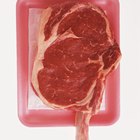
How to Cook a Steak on Grill Pan and ...
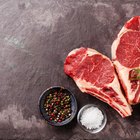
How to Cook Cowboy Cut Ribeye
The Baking Instructions for Fillet ...
How to Cook Sirloin Filets in a Pan and ...
How to Cook a Top Sirloin Steak Medium ...
How to Cook Boneless Top Chuck Steak in ...
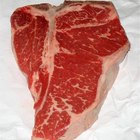
How to Cook Steak Tips

How to Cook London Broil

How to Cook a Thresher Shark Steak

How to Grill a Ribeye on a Weber Q
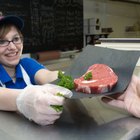
How to Cook Rump Steak

How to Pan-Fry a Petite Sirloin
How to Cook Buffalo Fillet

How to Cook Beef Tenderloin on a ...
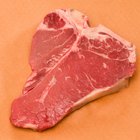
How to Broil Strip Steak

How to Cook Thin Sirloin Tip Steaks on ...

How to Cook Steak on a Baking Sheet

How to Cook a Prime Rib That Melts in ...
The Best Way to Cook New York Strip ...

How to Sear Tenderloin Steak and Cook ...
References
Tips
- The U.S. Department of Agriculture recommends cooking steak to a minimum of 145 F; however, many steak enthusiasts consider this too well done and choose to eat their meat cooked less so it's juicier and not as tough and chewy.
- Keep beef below 40 F during storage. Freeze it in an airtight package if you aren't going to use it within three to five days of purchase.
- Wash your hands with hot water and soap after touching raw beef. Also, promptly sanitize any kitchen tools and surfaces uncooked beef came into contact with.
Writer Bio
Eric Mohrman is a food and drink, travel, and lifestyle writer living in Orlando, Florida. He has professional experience to complement his love of cooking and eating, having worked for 10 years both front- and back-of-house in casual and fine dining restaurants. He has written print and web pieces on food and drink topics for Visit Florida, Orlando Style Magazine, CrushBrew Magazine, Agent Magazine, Dollar Stretcher Magazine, The 863 Magazine and other publications.